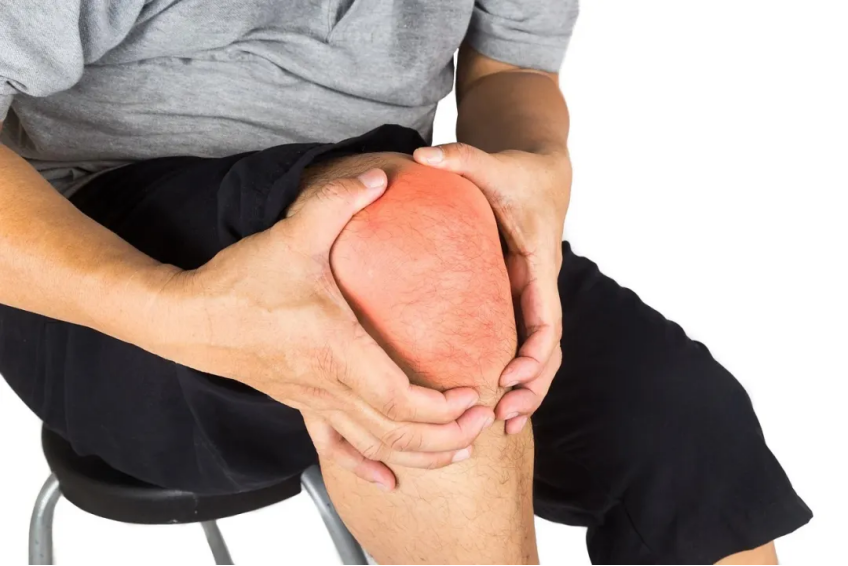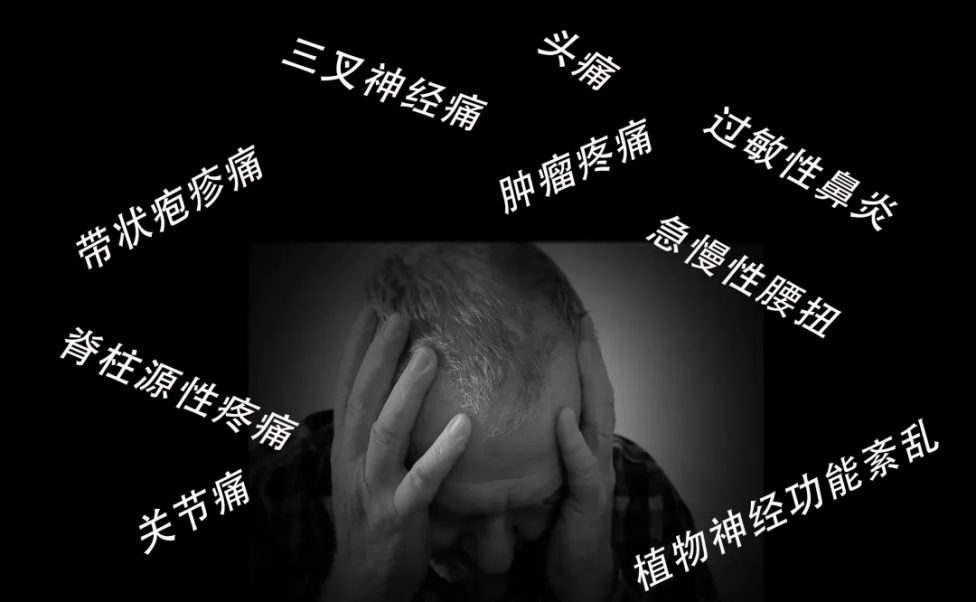What is the pain department for? Which types of pain should be treated in the pain department?
Pain, a sensation that seems simple yet is complex and ever-changing, is something almost everyone has experienced. Have you encountered situations like these, and how should we deal with them?
- "I’ve had headaches for 5 or 6 years. I’ve had CT and MRI scans, but they didn’t show anything, and I’ve been taking painkillers for years, which have also affected my digestive system."
- "I have shoulder pain. I went to the orthopedic department, and the doctor suggested I see a neurologist. The neurologist recommended physical therapy, but my shoulder still hurts and I can't lift it."
These seemingly unsolvable problems might have answers in the pain department. As the name suggests, the pain department is specifically dedicated to treating physical pain, but not limited to just pain. Some people experience pain or discomfort due to certain diseases, whether it’s chronic or acute. They can seek diagnosis and treatment from pain specialists.
Which diseases can be treated at the pain clinic?
Chronic Musculoskeletal Pain:
1、Joint Pain:
- Degenerative joint pain such as osteoarthritis of the knee, hip, and shoulder (including frozen shoulder).
- Joint pain caused by crystal deposition, such as gout.
- Joint pain caused by autoimmune or autoinflammatory conditions like ankylosing spondylitis and rheumatoid arthritis.
- Post-traumatic or post-surgical joint pain and mobility issues.
2、Spinal-Related Pain:
Lower back and leg pain, neck and shoulder pain caused by conditions like lumbar disc herniation and cervical spondylosis.
3、Pain After Musculoskeletal Injury:
Acute and chronic pain from lumbar sprains, lumbar muscle strain, supraspinous and interspinous ligament inflammation, myofascial pain, piriformis syndrome, heel pain, tenosynovitis, and tennis elbow.

图片来源:pixabay
Neuralgia:
1. Primary Neuralgia:
- Fibromyalgia syndrome, complex regional pain syndrome, etc.
- Trigeminal neuralgia, glossopharyngeal neuralgia, intercostal neuralgia, or other unexplained neuralgias.
2. Post-Herpetic Pain:
Includes acute pain during the acute phase of shingles and post-herpetic neuralgia.
3. Chronic Post-Surgical Pain:
Includes post-thoracotomy pain syndrome, post-lumbar surgery pain syndrome, incision pain, etc.
4. Pain After Nerve Injury:
Pain after peripheral nerve damage, painful diabetic peripheral neuropathy.
5. Pain After Nerve Compression:
Carpal tunnel syndrome, cubital tunnel syndrome, supinator muscle compression syndrome, piriformis syndrome, etc.
6. Central Pain After Stroke:
Phantom limb pain, residual limb pain.
7. Sympathetically Maintained Pain, etc.
Tumor Pain:
- Bone cancer pain, visceral pain, and other widespread pain caused by tumors.
- Chronic pain after tumor treatment: such as pain after radiotherapy, pain after chemotherapy, etc.
Chronic Head and Facial Pain:Cervicogenic headache, cluster headache, chronic migraine, temporomandibular joint dysfunction syndrome, post-traumatic headache, and various persistent headaches.

图片来源:pixabay
Chronic Visceral Pain or Ischemic Pain:
- Chest pain, abdominal pain, and pelvic pain caused by primary or secondary factors; chronic chest and abdominal wall pain; persistent dysmenorrhea.
- Perineal pain.
- Ischemic diseases: Raynaud's disease, obliterative thrombangiitis, lower extremity arteriosclerotic occlusion, persistent angina, etc.
Non-painful Diseases:Suboptimal health status, allergic rhinitis, autonomic dysfunction, insomnia, facial paralysis, hemifacial spasm, persistent hiccups.
So, what are the treatment methods used in the pain department?
01 Non-invasive Treatment
- Drug Therapy
- Physical Therapy: Shockwave therapy, super laser, and other non-invasive treatments
02 Outpatient Specialty Treatments
- Various nerve blocks, trigger point injections, joint cavity injections, ozone injection therapy, and ozone major autohemotherapy, etc.
03 Minimally Invasive Surgical Treatments
- Cervical and lumbar disc radiofrequency, ozone intervention therapy
- Radiofrequency modulation and neurolysis of nerve roots, ganglia, and nerve plexuses
- Interventional treatment for advanced cancer pain and intrathecal morphine pump implantation
- Radiofrequency ablation of the trigeminal nerve, glossopharyngeal nerve, pterygopalatine ganglion, etc.
- Spinal cord stimulation therapy
Misconceptions about Pain
There are often some misconceptions about pain treatment.Pain treatment doesn't address the root cause: With the current level of medical development, many diseases cannot be completely cured. Relieving pain and improving quality of life at certain stages is a precious life experience.
Pain is a symptom, not a disease: The distinction between symptoms and diseases is relative. When a chronic clinical symptom seriously threatens the patient's quality of life and work capacity over an extended period, it should be recognized as a disease. For example, primary trigeminal neuralgia is a typical pain-related disease. This condition is characterized solely by pain, and once the pain is alleviated, the disease is considered cured. Similarly, postherpetic neuralgia is also a pain-related disease, caused by nerve damage from the herpes zoster virus. The pain is intense and persistent, with some patients experiencing it for decades.
Sometimes, mild pain is an early manifestation of a disease. If not properly managed, it can develop into severe chronic pain-related diseases. In clinical practice, it is crucial to distinguish between pain as a symptom and pain as a pain-related disease.
The pain management department only treats pain, which may delay the condition: For acute pain caused by primary diseases, we should seek the appropriate specialist. For example, if we experience sudden angina, we should visit the cardiology department, and if we have an acute abdomen, we should visit the general surgery department. On the other hand, for chronic, stubborn pain, we should seek treatment from the pain management department. If not treated in a timely and effective manner, it can develop into complex regional pain syndrome or central pain, which results in more severe and difficult-to-treat pain.
Expert Introduction
Sun Lizhi, Chief Physician
Doctor of Medicine, Tohoku University, Japan
Consultation phone (WeChat same number): 18910755351With 35 years of clinical, teaching, and research experience in anesthesia and pain management. Specializes in nerve block, minimally invasive interventions for various types of head, neck, shoulder, back and leg pain, neuropathic pain, joint pain, and soft tissue pain. Also has deep expertise in non-pain-related conditions such as subhealth status, insomnia, and allergic rhinitis. Advocates for a concept for treating advanced cancer pain patients: ensuring that cancer pain does not become an everlasting torment for patients and their families.















